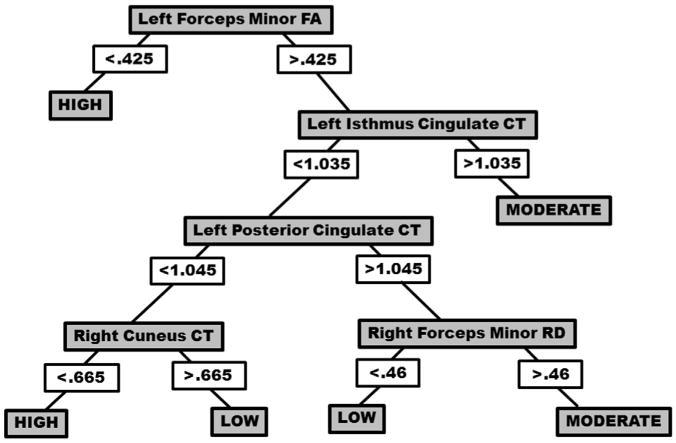My research topic is: First Home Care: Program Evaluation
People with autism and autism spectrum disorders are exposed to massive challenges when establishing social contact or interacting with others (Zager, Cihak, & Stone-MacDonald, 2016). Therefore, they require extensive support, which can be provided through training and education. A Day Support Program aimed at helping people with autism and autism spectrum disorders to gain public survival skills such as spatial awareness and sensory processing must be established.
The phenomenon of autism must be defined before launching a program aimed at assisting patients in the first Home Care facility. According to the existing definition, autism is a mental health disorder that can be characterized by the presence of massive impediments in communication for a patient (Zager et al., 2016). It should be noted that the specified definition issued in DSM-V has sparked a range of arguments due to the controversy surrounding it. By using autism as an umbrella term for all autism spectrum disorders, one is likely to dismiss the unique characteristics of patients’ conditions. Therefore, it is imperative to focus on using the principles of multiculturalism when tending to patients’ needs.
My research question(s) is
Do obstacle courses, building and creating activities, direct sensory exposure, and sensory activity scheduling help address the increased levels of anxiety in patients with autism, thus, helping them develop social skills and engage in interactions with the rest of the community?
The following are key concepts (up to 4) associated with the topic or contained in the research question that are not clear and need to be defined
Adults (patients aged 25-40) will be the primary focus of the study. During the program implementation, one must be fully aware of the concepts of direct sensory exposure (DSE) and sensory activity scheduling (SAS). By definition, DSE implies creating the environment in which a patient can contact with the items that require patients to use their senses, i.e., process visual, auditory, gustatory, and olfactory abilities (Green, Hernandez, Bookheimer, & Dapretto, 2017). SAS, in turn, suggests that a very elaborate choice of sensory irritants for a gradual exposure of a patient to a particular environment be made (Mills & Chapparo, 2017).
Specify the nominal definition for each of the concepts in question #3
- The ability of autistic patients to engage in the process of communication
- the effects of variables such as the application of therapies based on DSE and SAS as independent variables of the study on patients’ ability to communicate their ideas and converse with people
Specify the operational definitions for each of the concepts in question #3
The outcomes of DSE and SAS.
Explain how you will measure the concepts? Standardized measure or developed by you? Interview questions? etc. Be specific and include your measures at the back of this proposal.
The concepts will be measured with the help of a test for defining the progress of autistic patients. To evaluate the efficacy of the suggested interventions, one will have to deploy the most recent modification of the Ritvo Autism Asperger Diagnostic Scale (see Appendix A) (Sizoo et al., 2015). The specified tool will allow exploring the severity of communication impediments faced by patients and compare the degree of the disorder development with the one that will be observed after the application of SAS and DSE.
Explain how you will obtain the sample and what kind of sampling you will use for this project. For example, Posters in Lobby, archived data? Convenience, purposive?
A sample will be obtained by recruiting patients from a local facility (First Home Care). Therefore, convenience sampling will be selected as the key sampling method. Although the identified approach may lead to certain misrepresentations of target demographics, it will allow creating a general framework that will help meet the needs of an autistic person.
What design will you use? Be specific for SSD (ABA) or Group (Classic Pre/Post), etc.
The research question will be answered with the help of a quantitative approach. By comparing the effects of DSE and SAS to the ones that are used traditionally, one will be able to identify the effects thereof. As a result, a coherent strategy for managing the needs of autistic patients will be designed.
Create a Timeline for your overall project. Note that this can be tentative as some things may be out of your control. Below is an example of creating your timeline. It’s not complete, just a guideline. You can expand this or create a better one of your own.
References
Green, S. A., Hernandez, L., Bookheimer, S. Y., & Dapretto, M. (2017). Reduced modulation of thalamocortical connectivity during exposure to sensory stimuli in ASD. Autism Research, 10(5), 801-809. Web.
Libero, L. E., DeRamus, T. P., Lahti, A. C., Deshpande, G., & Kana, R. K. (2015). Multimodal neuroimaging based classification of autism spectrum disorder using anatomical, neurochemical, and white matter correlates. Cortex, 66(1), 46-59.
Mills, C., & Chapparo, C. (2016). Use of an In-class sensory activity schedule for a student with autism: Critical case study. Creative Education, 7(7), 979-989. Web.
Sizoo, B. B., Horwitz, E. H., Teunisse, J. P., Kan, C. C., Vissers, C. T. W. M., Forceville, E. J. M.,… Geurts, H. M. (2015). Predictive validity of self-report questionnaires in the assessment of autism spectrum disorders in adults. Autism, 19(7), 842-849. Web.
Zager, D., Cihak, D. F., & Stone-MacDonald, A. (2016). Autism spectrum disorders: Identification, education, and treatment. New York, NY: Taylor & Francis.
Include your Measures here. (Libero, DeRamus, Lahti, Deshpande, & Kanaa, 2015)
